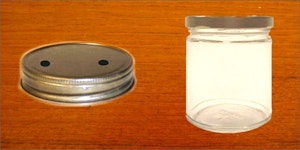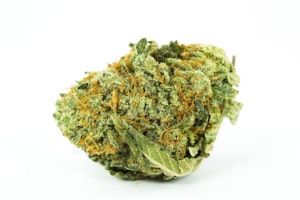
Photo by Eric Limon / Adobe Stock Photo
Basics Of Growing Cannabis At Home & Buying Clones
Cannabis cultivation isn’t just for high-tech indoor setups or properties with acreage for greenhouses.
Nowadays, anyone can grow their own weed at home. We’ve put together a comprehensive growing guide to help even the most inexperienced growers have a successful first harvest.
Grow At Home Basics & Tips
Are you ready to try your hand at home cultivation? With attention, dedication, and love for the plant, you’ll be growing incredible cannabis in no time. Here’s what you need to know about growing clones.
About The Plant

Photo by Xhico / Adobe Stock Photo
When you pick up your plants, you’ll most likely receive three seedlings in one pot. They are healthy, vibrant, and ready to sprout your first homegrown buds. The plants can be grown indoors or outdoors, but be sure you are providing enough sunlight if you opt for indoors. A window sill may be suitable, but it’s best to add supplemental lighting.
The plants should be in a 2.5-gallon pot with a tomato cage to help them remain upright and protected as it wobbles through early growth. Think of your young seedlings like pre-teens getting ready to go through those awkward phases of puberty. The soil is vital and thriving, already fed with the optimum nutrients it needs to thrive.
You will need to feed and water your plant in a balanced routine. In the early stages of vegetative growth, it’s essential to strike an even ratio of nitrogen, phosphorus, and potassium. Monitor the plant’s leaves for signs of imbalance. If the leaves are very dark green, you might be giving too many nutrients.
If the leaves are yellowing they likely need more nutrients. Some dead and yellowing leaves simply indicate growth and are not cause for concern. However, if the yellowing occurs closer to the top than the bottom, you need to adjust the feed cycle. Pull off dead leaves so the plant can use its energy for new growth.
Warmth and sunlight are very important, but intense heat can burn your leaves. Keep in mind that if you choose to grow outdoors, you’ll need to have a pest management plan in place. As for water, you’ll probably want to water once a day or every other day.
Saturate the soil thoroughly, looking for a little bit of runoff. Don’t soak the soil or you might end up with rotting roots, but be sure that all of the soil gets a nice drink. A good way to tell if your plants are thirsty is to stick your fingers into the soil. If the top two inches are dry, it’s time to water.
How To Buy Clones
Jumpstart Your Home-Grown Cannabis Adventure with Marijuana Clones Online
No more delicate seedlings. For those eager to venture into the world of home-grown cannabis, the right clones is a crucial first step. Marijuana Clones Online makes it easy. A reliable source for high-quality clones will kickstart your cultivation journey. Marijuana clones online offer an extensive collection of genetically stable and disease-free cannabis clones, ensuring you a hassle-free start to your growing experience.
Key features that make Marijuana Clones Online the go-to choice for home growers:
A wide variety of strains: Choose from an impressive array of Indica, Sativa, and Hybrid strains to suit your preferences and needs.
Top-notch quality: Each clone is carefully nurtured to ensure strong root systems and robust plants.
Disease-free guarantee: Rigorous quality control measures are in place to deliver healthy, pest-free clones.
Expert guidance: The platform provides comprehensive support and advice to guide you through the entire growing process.
When diving into Herb’s guide on the basics of growing cannabis at home and buying clones, be sure to check out Marijuana Clones Online as a trustworthy partner in your cultivation adventure. With their extensive selection of strains, commitment to quality, and invaluable expert guidance, you’ll be well-equipped to embark on a successful and fulfilling cannabis-growing journey right from the comfort of your own home.
Early Flowering
Pre-flower begins around week three, to possibly week five. Baby buds are now forming, and white pistils are shooting out. As the plant grows, it’s time to give the plant more light and more nutrients. This is like feeding a teenager. It’s hungrier, thirstier, and going through a big growth spurt. The vegetative stage is over, and it’s time to focus your fertilizer regime on the bloom cycle.
There are so many different ways to fertilize, and you can purchase nutrients from a grow store, or you can try to do it at home with concoctions made from eggshells, coffee grounds, and things like homemade bokashi. Do a little research and decide what is best for you.
If the pistils are changing from white to orange very quickly, the plant may be too hot. Provide more airflow and ventilation. Neem oil is an excellent natural remedy against pests and powdery mildew, as well as ladybugs.
Late Flowering
The buds should be chunky and dense, firming up every day. This is the final stage of plant growth. The white pistils are turning amber or orange, and the leaves are slowly dying. The plant doesn’t need them anymore, so it’s a great time to start defoliating the entire plant. Removing the big fan leaves will not harm the plant because they don’t provide value at this time.
No need to remove them all, or get too close to the buds. These leaves actually help protect the trichomes while the plants are hanging to dry. The best way to do this is to start at the bottom of the plant and work your way up. If you have tiny buds along with the stalks, leave those. While they might not be the biggest buds, they are still great for smoking or infusing homemade tinctures or oils.
Ease off fertilizer over the last three to five days, and water only with pure, fresh water. If you are still spraying against pests, do so early in the morning before the heat of the day. Spraying during the heat of the day can burn the plants and cause irreparable damage.
Drying & Harvest

You’ll know it’s time to harvest when most (but not all) of the pistils have turned from white to amber. If they’ve turned brown and begun to fall off, you’ve waited too long. It’s better to harvest a little early than too late.
The most important thing to consider when harvesting is to handle it with care. Hold the plant from the marrow stem and be careful not to jostle the buds too much or the trichomes will fall off. Use caution not to drop the plants in the dirt and pay extra attention to handling with care.
Drying the plants requires a bit of space. You’ll want to hang them in a safe place where they won’t encounter any interference. If you can, use a dehumidifier in addition to fans. Mold and mildew can still wreck your harvest if you do not dry your plants thoroughly. Sixty to sixty-three degrees is the ideal temperature for drying plants. Cooler is better. The drying process takes two to three weeks in total. If the leaves or stalks become somewhat brittle, the drying is complete.
Trimming & Curing

One dry, it’s time to manicure your buds. Trimming takes a little practice. Get trimming scissors made for manicuring cannabis and trim over a tray to collect all of the stems and leaves. The goal is to keep as much sugar leaf and bud as possible while removing the crow’s feet (stems) and fan leaves.
No need to trim them down to the bare bones, the sugar leaves contain plenty of terpenes and cannabinoids and taste amazing when smoked. Holding onto the stem instead of the buds protects the trichomes as well.
To cure your weed, consider investing in curing bags. If you prefer to use the jar method, fill a mason jar about three-quarters full and seal with a lid. Every day or two, take the lid off and let the herb breathe before sealing again. Keep this up every day, and you’ll begin to notice the smell and flavor develop. The curing process takes a couple of weeks, but you can carry on with it for several weeks to dial it in to your preference.
How To Plant Clones
Each 2.5-gallon pot contains three seedlings. This pot is a suitable home for about a week, but then you’ll want to separate the seedlings into their own pots to avoid overcrowding. You’ll need three new pots and enough potting soil to fill them.
When choosing a pot size, opt for one two to four inches larger, and no more than five inches larger. If the pot is too small, the plant won’t reach its full potential, but if it’s too big, the soil dries too slowly and can lead to root rot.
To transplant, fill the bottom third of the pots with soil. Gently maneuver the seedlings out of their existing pot and use your fingers to remove loose soil and slowly break apart the seedlings.
Be careful to only rip roots as needed so you do not cause too much shock and damage. Once separated, place each seedling into its new home and surround it with fresh soil.
Pack the soil in with your hands, but not too tightly. Water your new clone until water runs through the bottom of the pot.
How To Care For Clones
Once you’ve transplanted your clone, it may experience a bit of transplant shock. This can look like drooping or general distress, but it should bounce back within a couple of days. Caring for young plants at this stage means paying special attention to light needs, moisture levels, and temperatures. Stick to the guidelines highlighted above and you will quickly learn how to adapt to the changing needs of your new baby plants.
Herb Recommended Products:
READ MORE











